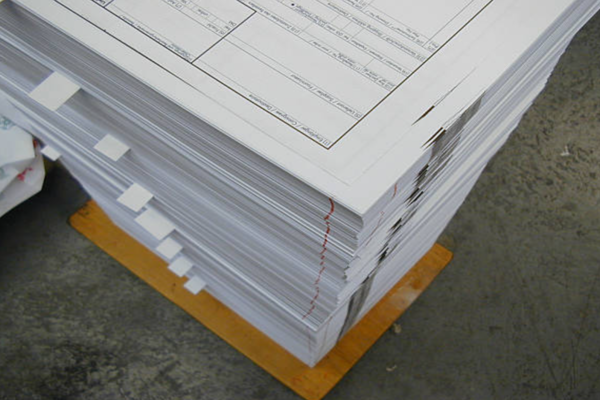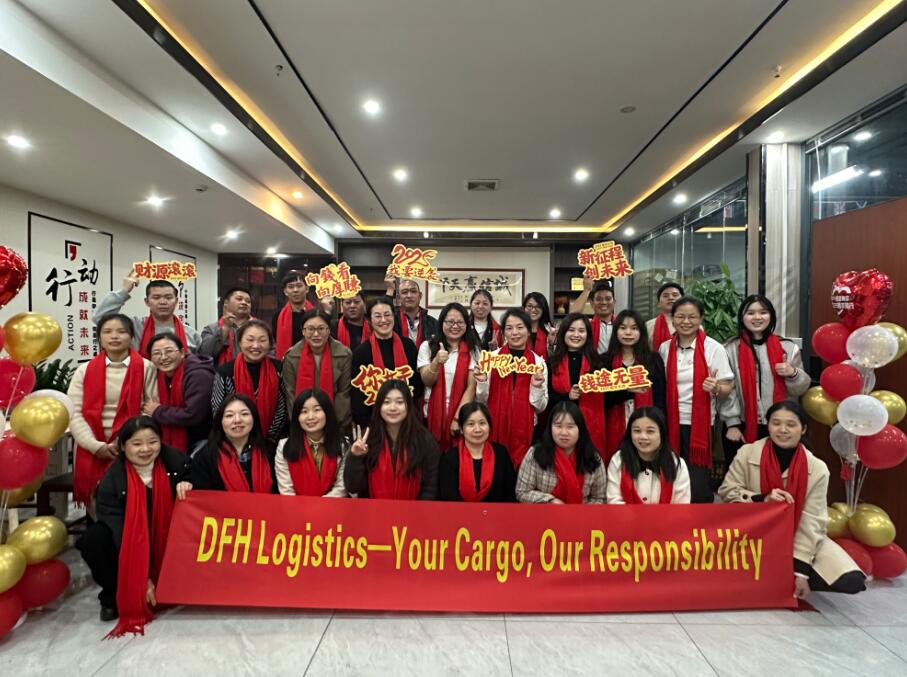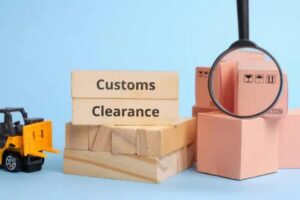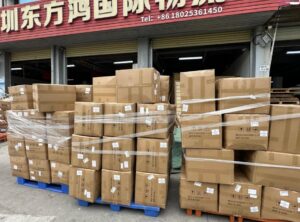When importing from China, you’ll typically need a commercial invoice, packing list, transport document (B/L or AWB), certificate of origin, export/import declarations, insurance certificate, and any product-specific licenses or test reports. Accuracy and consistency across these files are critical to avoid delays, penalties, or storage fees.
1. Why Customs Documentation Matters When Importing from China

Customs documents prove the transaction, describe the goods, and show compliance with import laws. Missing or mismatched paperwork triggers holds, extra inspections, demurrage, and even fines. As DFH Logistics’ co-founder, I’ve seen most problems come from inconsistent descriptions, wrong HS Codes, undervaluation, or incomplete licenses.
What “good” paperwork achieves
- Faster clearance with fewer queries
- Predictable duties/taxes and landed cost
- Lower risk of post-entry audits and penalties
2. What Customs Documents Are Required When Importing from China?

The core set includes a commercial invoice, packing list, transport document (sea B/L, AWB, or express waybill), certificate of origin if claiming preferences, export/import declarations, insurance certificate, and product-specific permits or testing certificates.
Document families
- Commercial: Commercial Invoice (CI), Packing List (PL)
- Transport: Bill of Lading (B/L), Air Waybill (AWB), Express Waybill
- Compliance: Certificate of Origin, product licenses, testing, declarations, insurance
3. Commercial Invoice: The Foundation of Your Shipment
A commercial invoice records the sale and is used by customs to assess duties/taxes. It must clearly state parties, goods, quantities, unit/total values, currency, HS Codes, and the Incoterm (e.g., FOB, CIF, DDP).
What to include (and match across documents)
| Field | Best Practice |
|---|---|
| Seller/Buyer | Legal names + full addresses |
| Description | Plain-language name + model/specs |
| HS Code | 6–10 digits as required by destination |
| Quantity/Units | Pcs/sets, consistent with PL |
| Unit Price/Total | Currency stated (USD/EUR/etc.) |
| Incoterm + Place | e.g., FOB Shenzhen, CIF Long Beach |
| Country of Origin | Usually “China” unless rules of origin differ |
| Sign/Stamp | Preferably signed/stamped by seller |
DFH tip: Mirror the invoice description in the PL and the B/L/AWB. Customs compares them line-by-line.
4. Packing List: Your Physical Cargo Map
The packing list details packaging, carton IDs, weights, and dimensions—used by customs, warehouses, and carriers to verify counts and plan handling.
Essential elements
- Carton / pallet numbers (e.g., 1/50…50/50)
- Gross/Net weight per carton + shipment totals
- Dimensions per carton + shipment volume (CBM)
- Item mapping: which SKUs are in which cartons
Common mistakes to avoid
- Total cartons on PL ≠ B/L or booking
- Net weight omitted (only gross provided)
- Carton IDs repeated or missing
5. Transport Documents: B/L, AWB, or Express Waybill
These prove carriage and enable release: a negotiable Bill of Lading for sea freight, a non-negotiable Air Waybill for air, or a courier waybill for express. Data must align with CI/PL.
| Mode | Document | Notes |
|---|---|---|
| Sea (FCL/LCL) | Bill of Lading (B/L) | Original vs Telex Release; shipper/consignee/notify must be correct |
| Air | Air Waybill (AWB) | Tracking & delivery; ensure HS summary and weight match |
| Express | Courier Waybill | Fastest; used widely for samples, small parcels, or DDP lanes |
DFH tip: For time-critical shipments, Telex Release eliminates couriering original B/Ls and speeds up delivery.
6. Certificate of Origin (CO, Form E, Form A, RCEP CO)
A certificate of origin proves manufacturing origin and may qualify goods for reduced duty under FTAs (e.g., RCEP, ASEAN, GSP). Ensure the HS Code and consignee match the invoice.
When it matters
- You’re claiming preferential duty rates
- Your buyer’s country mandates origin proof for specific categories
DFH tip: Ask suppliers early which CO variant applies to your destination; late applications can miss sailing cut-offs.
7. Export & Import Declarations
Declarations transmit shipment data to customs (values, HS Codes, origin, Incoterm). China Export Declarations are filed before departure; destination Import Declarations are filed on arrival by your broker/forwarder.
Data alignment checklist
- HS Codes, value, currency = invoice
- Weight/volume = PL and booking
- Incoterm = invoice and sales contract
- Licenses/permits numbers declared where required
DFH practice: We pre-audit declarations to catch miscodes or valuation issues before they trigger queries.
8. Product Licenses, Permits, and Market-Entry Certificates
Some goods require destination-specific authorization: food/cosmetics, batteries, radio equipment, medical devices, and more. Missing permits cause holds or returns.
Typical by category (illustrative, not exhaustive)
- Electronics/Radio: CE/UKCA/FCC, RoHS, EMC reports
- Batteries/Power Banks: UN38.3, MSDS, transport approvals
- Food/Cosmetics: Health permits (e.g., FDA facility registration for certain items), labeling approvals
- Toys/Children’s Products: CPSIA, EN71, test reports
- Medical/PPE: FDA/510(k) where applicable, EU MDR/IVDR conformity
DFH tip: Confirm before PO: applicable standard, who tests (factory vs third-party), lead time, and labeling.
9. Inspection & Testing: CIQ/SGS/BV and Conformity Evidence
Pre-shipment inspections and lab tests (SGS/BV/TÜV, etc.) help verify safety and compliance. Many importers attach these reports to the entry file to pre-empt queries.
When to commission
- New suppliers or high-risk categories
- First shipments of regulated products
- Recurrent customs queries on a route
DFH service: We coordinate on-site inspections and lab testing windows to align with cargo readiness and vessel/flight ETD.
10. Cargo Insurance & Insurance Certificate
Insurance covers loss/damage in transit and supports claims and customs valuation issues. The certificate should show policy number, insured amount, covered perils (e.g., ICC A/B/C), and shipment identifiers.
Right-sizing coverage
- Match Incoterm: under CIF/DDP, seller/forwarder often arranges
- High-value or fragile goods: choose ICC(A) “All Risks”
- State the packing type; insurers care (e.g., wooden crate vs carton)
DFH tip: We can place discounted cover and issue certificates aligned with your invoice currency and values.
11. Country Notes (Quick Reference)
Requirements vary by destination. Align your pack with local rules on valuation, origin, and product safety to avoid holds.
- United States: CBP focuses on tariff accuracy and product admissibility (CPSC/FDA/FCC).
- European Union: CE/RoHS/REACH compliance; origin proofs via REX/Form A.
- UK: UKCA rules for post-Brexit conformity.
- Australia/Canada: Biosecurity and labeling enforcement for certain goods.
12. Responsibilities Matrix: Who Prepares What?
Define document ownership early between supplier, forwarder, and importer to avoid missing paperwork.
| Document | Supplier | Forwarder | Importer |
|---|---|---|---|
| Commercial Invoice | ✓ | Review | |
| Packing List | ✓ | Review | |
| B/L or AWB | ✓ | Review | |
| Export Declaration (CN) | ✓ | ||
| Import Declaration | ✓/Broker | ✓ | |
| Certificate of Origin | ✓ | Assist | Review |
| Product Licenses/Tests | ✓ | Coordinate | Confirm |
| Insurance Certificate | Optional | ✓ | ✓ |
13. Pre-Shipment Document Audit Checklist
A final review before loading ensures your papers will pass customs without extra checks.
- Descriptions match across all documents
- HS Codes verified
- Quantities and weights consistent
- Incoterm identical on CI and PL
- Certificates ready (CO, test, license)
- Insurance confirmed
- Receiver tax IDs provided where needed
14. Frequent Errors and How to Prevent Them
Frequent mistakes include wrong HS codes, vague descriptions, inconsistent values, missing permits, and unsigned documents. Prevention saves cost and time.
- Use a product HS table for accuracy
- Add model/material to descriptions
- Use single data source for CI/PL
- Verify license category before PO
- Ensure signed/stamped final PDFs
15. How DFH Logistics Handles Your Customs Documents End-to-End

DFH prepares, audits, and harmonizes all customs documents—invoice, packing list, export declaration, origin certificates, testing, and destination entry—to keep your shipments compliant worldwide.
What DFH provides
- Pre-classification and HS validation
- Full document harmonization
- Origin document applications
- Inspection and test coordination
- DDP handling with import clearance
- Transparent milestone reporting
16.Strong Paperwork = Smooth Logistics
Proper documentation drives smooth customs clearance, predictable delivery, and lower costs. Build a consistent process and partner with a forwarder that treats paperwork as strategic, not administrative.
Ready to ship from China with all customs documents correctly prepared?
Contact DFH Logistics for professional, end-to-end support.
You Can also Read the below Articles if you need:



